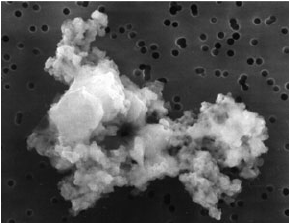Recent research suggests that cosmic dust might possess a much higher level of porosity than previously understood. Led by Alexey Potapov from Friedrich Schiller University Jena, the study highlights the implications of this finding for the chemistry of space, including the formation of essential compounds necessary for planet-building.
The study reveals that the structure of cosmic dust—specifically its “porosity” or the presence of holes—affects its chemical behavior significantly. Dust in space acts as a catalyst for vital reactions, such as the formation of hydrogen gas (H2). If dust is more porous, this increases the surface area available for these reactions, enhancing the dust’s role in interstellar chemistry. Additionally, porous dust can trap volatile substances like water, potentially transporting these materials to sites where planets form, including the early Earth.
Understanding cosmic dust’s porosity involves distinguishing between two types: intrinsic and extrinsic. Intrinsic porosity refers to intentional holes within the dust material, like a buckyball with a central cavity. In contrast, extrinsic porosity arises from gaps between particles compacted by gravitational forces.
The authors base their conclusions on four significant sources of observational evidence. First, samples collected from missions such as Stardust and Rosetta provide direct insight into the composition of cosmic dust. Launched in 1999, Stardust collected samples from Comet Wild 2, while Rosetta, launched in 2004, studied dust around Comet 67P/Churyumov-Gerasimenko. Both missions discovered a mix of compact and porous dust, with some samples exhibiting porosity levels as high as 99%.
Remote observations of the interstellar medium have further informed this understanding. For example, a study conducted by the Atacama Large Millimeter/submillimeter Array (ALMA) indicated a porosity of around 90% for dust surrounding the star system HL Tau. However, the authors noted that repeated collisions among dust particles may have compacted the material over time. Another study focusing on the IM Lup system suggested that the scattering patterns observed fit models depicting dust as fractal aggregates, again pointing to significant porosity.
In a laboratory setting, researchers have explored the growth of cosmic dust using innovative methods. By ablating rocks with a laser, they deposited the resulting gas and dust, consistently producing highly porous material that aligned with findings from the Rosetta and Stardust missions. Modeling efforts confirmed that initial interactions among dust particles often resulted in extrinsic porosity, while atomistic simulations revealed that internal micropores within inherently porous samples could trap water molecules, reducing their likelihood of sublimating into space.
Despite substantial evidence supporting the idea of highly porous cosmic dust, the authors caution that definitive proof remains elusive. They call for further research to determine whether the sponge-like nature of dust is a common characteristic throughout the universe.
As scientists continue to unravel the mysteries of cosmic dust, the potential implications for our understanding of planetary formation and the distribution of essential elements in the universe remain profound. The findings usher in a new perspective on how we perceive the building blocks of celestial bodies and their interactions in the vastness of space.







































































